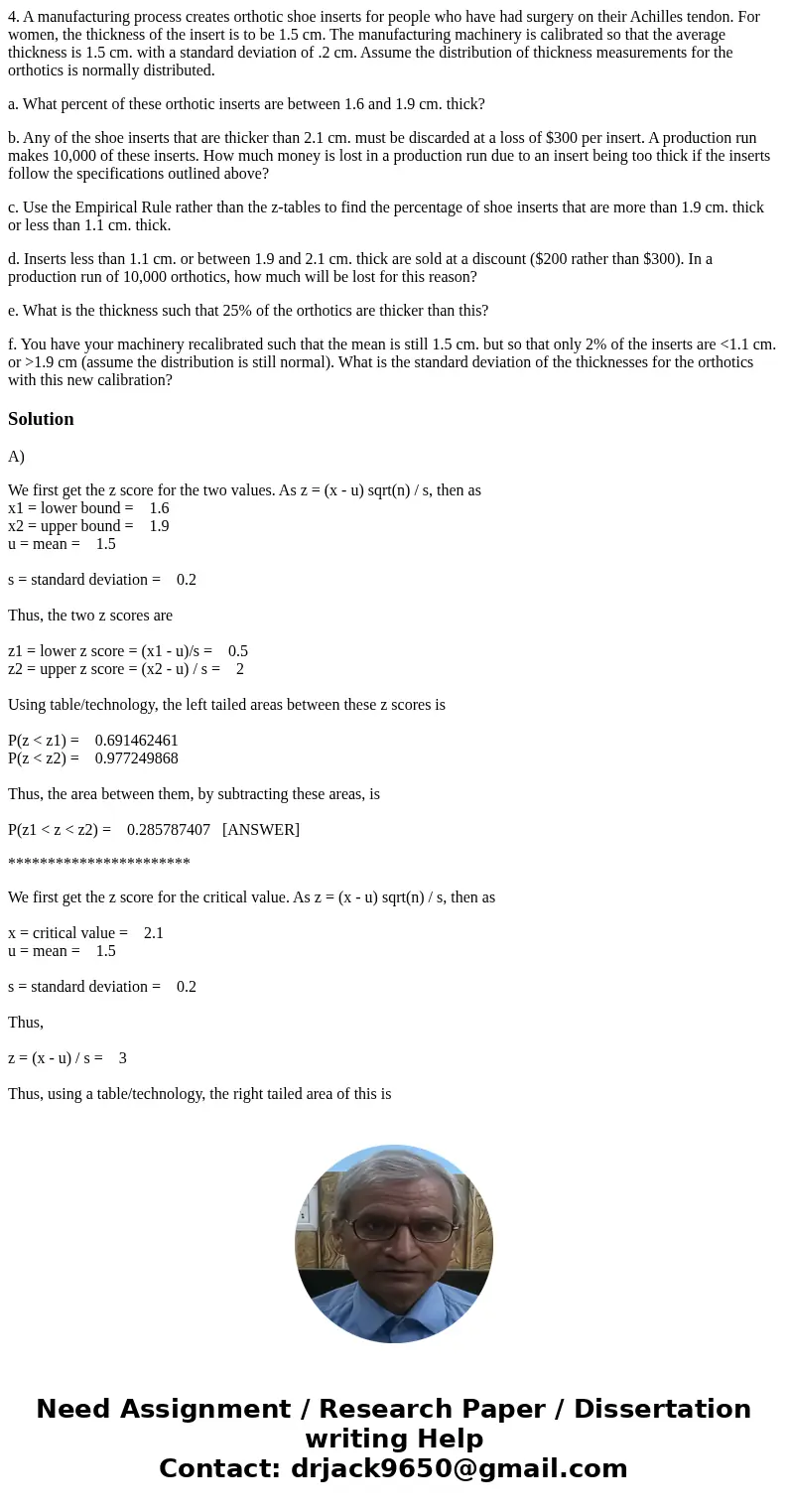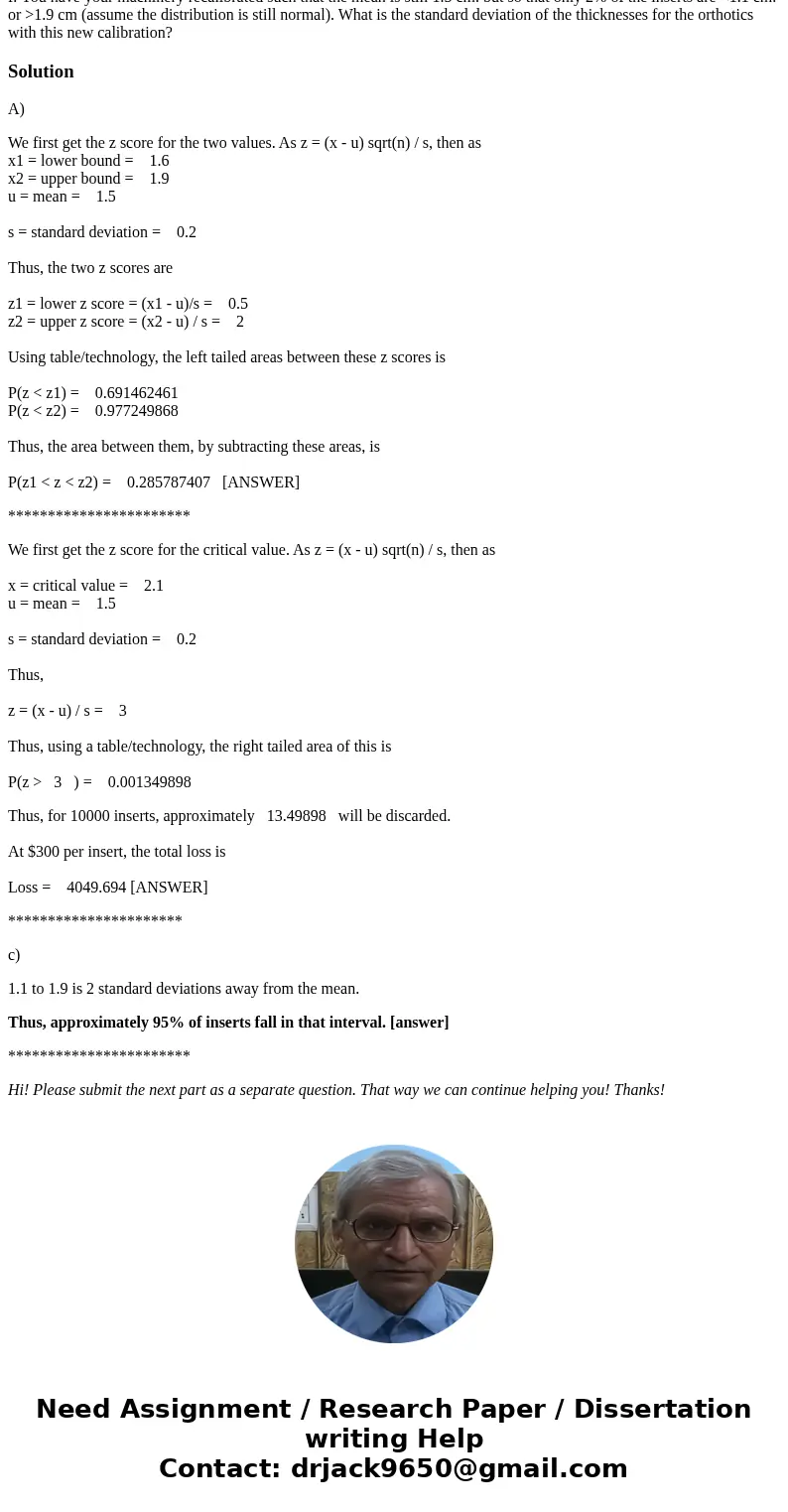4 A manufacturing process creates orthotic shoe inserts for
4. A manufacturing process creates orthotic shoe inserts for people who have had surgery on their Achilles tendon. For women, the thickness of the insert is to be 1.5 cm. The manufacturing machinery is calibrated so that the average thickness is 1.5 cm. with a standard deviation of .2 cm. Assume the distribution of thickness measurements for the orthotics is normally distributed.
a. What percent of these orthotic inserts are between 1.6 and 1.9 cm. thick?
b. Any of the shoe inserts that are thicker than 2.1 cm. must be discarded at a loss of $300 per insert. A production run makes 10,000 of these inserts. How much money is lost in a production run due to an insert being too thick if the inserts follow the specifications outlined above?
c. Use the Empirical Rule rather than the z-tables to find the percentage of shoe inserts that are more than 1.9 cm. thick or less than 1.1 cm. thick.
d. Inserts less than 1.1 cm. or between 1.9 and 2.1 cm. thick are sold at a discount ($200 rather than $300). In a production run of 10,000 orthotics, how much will be lost for this reason?
e. What is the thickness such that 25% of the orthotics are thicker than this?
f. You have your machinery recalibrated such that the mean is still 1.5 cm. but so that only 2% of the inserts are <1.1 cm. or >1.9 cm (assume the distribution is still normal). What is the standard deviation of the thicknesses for the orthotics with this new calibration?
Solution
A)
We first get the z score for the two values. As z = (x - u) sqrt(n) / s, then as
x1 = lower bound = 1.6
x2 = upper bound = 1.9
u = mean = 1.5
s = standard deviation = 0.2
Thus, the two z scores are
z1 = lower z score = (x1 - u)/s = 0.5
z2 = upper z score = (x2 - u) / s = 2
Using table/technology, the left tailed areas between these z scores is
P(z < z1) = 0.691462461
P(z < z2) = 0.977249868
Thus, the area between them, by subtracting these areas, is
P(z1 < z < z2) = 0.285787407 [ANSWER]
***********************
We first get the z score for the critical value. As z = (x - u) sqrt(n) / s, then as
x = critical value = 2.1
u = mean = 1.5
s = standard deviation = 0.2
Thus,
z = (x - u) / s = 3
Thus, using a table/technology, the right tailed area of this is
P(z > 3 ) = 0.001349898
Thus, for 10000 inserts, approximately 13.49898 will be discarded.
At $300 per insert, the total loss is
Loss = 4049.694 [ANSWER]
**********************
c)
1.1 to 1.9 is 2 standard deviations away from the mean.
Thus, approximately 95% of inserts fall in that interval. [answer]
***********************
Hi! Please submit the next part as a separate question. That way we can continue helping you! Thanks!


 Homework Sourse
Homework Sourse